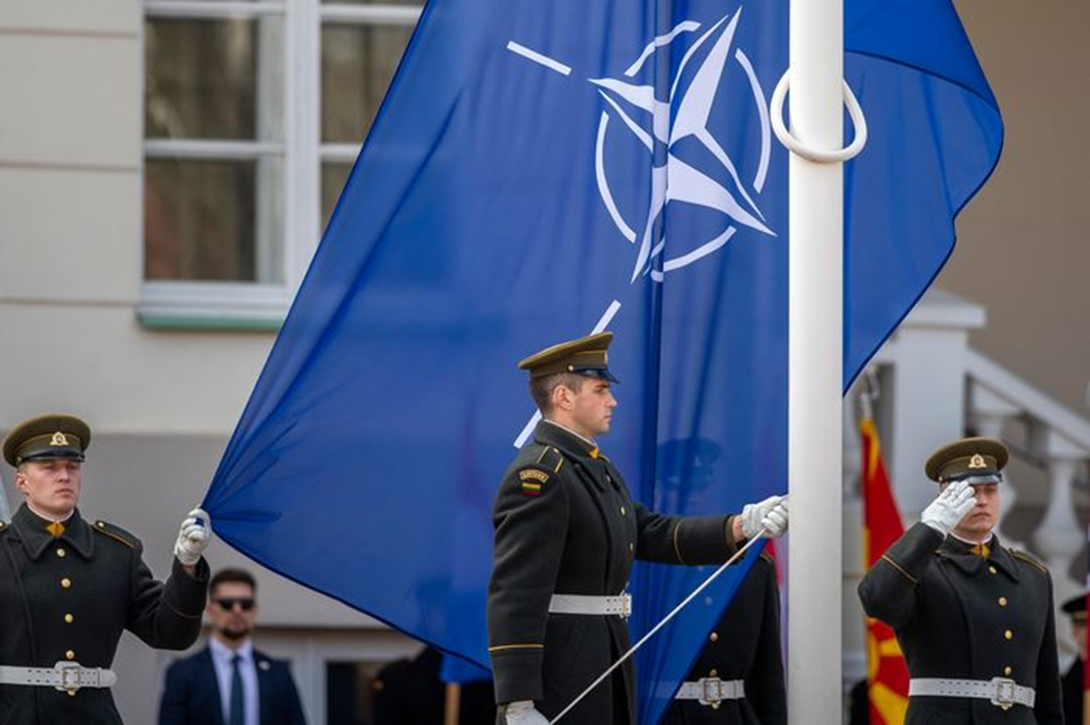- Courses
- GS Full Course 1 Year
- GS Full Course 2 Year
- GS Full Course 3 Year
- GS Full Course Till Selection
- Answer Alpha: Mains 2025 Mentorship
- MEP (Mains Enrichment Programme) Data, Facts
- Essay Target – 150+ Marks
- Online Program
- GS Recorded Course
- Polity
- Geography
- Economy
- Ancient, Medieval and Art & Culture AMAC
- Modern India, Post Independence & World History
- Environment
- Governance
- Science & Technology
- International Relations and Internal Security
- Disaster Management
- Ethics
- NCERT Current Affairs
- Indian Society and Social Issue
- NCERT- Science and Technology
- NCERT - Geography
- NCERT - Ancient History
- NCERT- World History
- NCERT Modern History
- CSAT
- 5 LAYERED ARJUNA Mentorship
- Public Administration Optional
- ABOUT US
- OUR TOPPERS
- TEST SERIES
- FREE STUDY MATERIAL
- VIDEOS
- CONTACT US
NATO AT 75: WHY THE ALLIANCE WAS FORMED, WHERE IT STANDS TODAY
NATO AT 75: WHY THE ALLIANCE WAS FORMED, WHERE IT STANDS TODAY
08-04-2024

At an event marking 75 years of the North Atlantic Treaty Organisation (NATO) on April 4, Secretary General Jens Stoltenberg said “NATO is bigger, stronger, and more united than ever.”
North Atlantic Treaty Organization (NATO):
- NATO is a Western security alliance founded on April 4, 1949, with 12 founding members – Belgium, Canada, Denmark, France, Iceland, Italy, Luxembourg, the Netherlands, Norway, Portugal, the United Kingdom and the United States.
- They signed the Washington Treaty, which gets its power from Article 51 of the United Nations Charter, “which reaffirms the inherent right of independent states to individual or collective defence.”
- Article 5 of the Washington Treaty, which defines the concept of “collective security” – an attack on any of the members is seen as an attack on all of them and demands collective action.
- This was deemed necessary in 1949 amid the Cold War rivalry between the then USSR and the US, over ideological and economic superiority.
Key Facts about NATO:
- Military Alliance: NATO is a military alliance established by the North Atlantic Treaty.
- Membership: Currently, it comprises 32 member states from North America and Europe.
- Fundamental Goal: NATO's primary objective is to safeguard the freedom and security of its members through political and military means.
- Collective Defense: NATO operates on the principle of collective defense, where member states agree to come to each other's aid in response to external threats or attacks.
- Functions: NATO fulfills both political and military roles:
- Political: It promotes democratic values, facilitates consultation, and promotes cooperation among members on defense and security-related issues.
- Military: NATO is committed to peaceful dispute resolution, but maintains the military capability to undertake crisis management operations when diplomatic efforts prove insufficient
- NATO Headquarters: Brussels, Belgium.
FAQs:
Q1: What is the Washington Treaty?
- The Washington Treaty, also known as the North Atlantic Treaty, is the backbone of the North Atlantic Treaty Organization (NATO). It was signed on April 4, 1949, in Washington D.C., by 12 founding members.
Key Points about the Washington Treaty:
- Basis of NATO: The treaty serves as the foundation for NATO, providing the legal and political framework for the Alliance.
- Collective Defense: This commits members to defend each other in the event of attack, thereby promoting a sense of solidarity within the alliance.
- Flexibility: Despite changing security dynamics, the treaty remains remarkably flexible.
- Authority: The treaty derives its authority from Article 51 of the United Nations Charter, which affirms the inherent right of independent states to individual or collective defence.
Q2: What is the United Nations Charter?

- The United Nations Charter is the founding treaty of the United Nations.
- It is an instrument of international law that establishes the UN's purposes, governing structure, and framework.
- The Charter was signed on June 26, 1945, and took effect on October 24, 1945.
- The Charter sets out the rights and obligations of Member States, and codifies the basic tenets of international relations.
- It includes seven principles, such as sovereign equality, and the peaceful settlement of international disputes.
- The Charter also prohibits the use of force in any manner inconsistent with the purposes of the United Nations.
- The Charter consists of 111 articles grouped into 19 chapters.
- Some of the topics covered include: Developing friendly relations among nations, achieving international cooperation, defining the criteria for membership in the UN, and Describing the UN's organs and institutions.
Must Check: Best IAS Coaching In Delhi



